The Gear Behind My Best Astrophotography Images
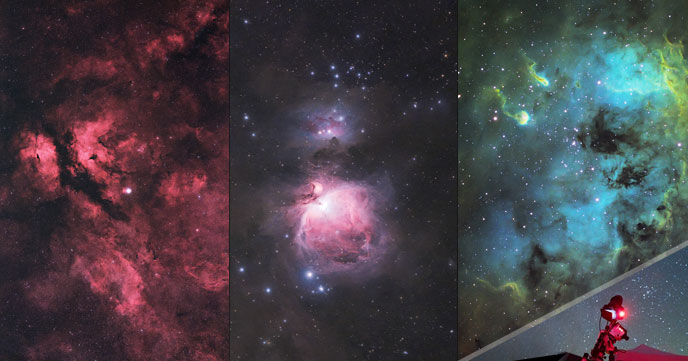
In this post, I’ll share my 10 best astrophotography images of the year, and the complete list of gear used to take them. I completed roughly 40 projects this year, and it was difficult to choose my favorite 10 images from the bunch.
The selection process involved remembering why each photo was so special. Why each one of these astrophotography images made me say “wow” as I opened the picture files on my computer.
You may find it useful to see the exact imaging configurations used for each photo, as the gear used was deliberately selected to best capture each deep-sky object.
I’ll explain why each one of these astrophotography images sustained (and grew) my passion for this hobby, and perhaps it will inspire you to do the same. If you would like to keep up with my latest images as I share them, consider following me on Instagram.
As you all know, the image acquisition stages of astrophotography are only half of the story. You can capture the best data in the world, but without great image processing, your photos will be held back. For those that need a little help, I have created an astrophotography image processing guide to use as a reference at your own pace.
My Best Astrophotography Images of 2019
In the online forums, you’ll often find people sharing very strong opinions about particular gear based on the technical specifications. Although this information is very relevant, I hesitate to follow advice from others that have not shared a single picture taken with the camera or telescope in question.
I find that beginners can easily get caught in “paralysis by analysis” mode, as they’ve read rants from users that may or may not have been using their equipment properly. In a hobby with the word “photography” in the name, I believe the pictures are the true judge of the astrophotography gear.
I believe it is also helpful for you to know that I am just a regular guy who has learned most of what I know now through trial and error. I don’t get more clear nights than the rest of you (chances are, far less), but I get out there.
You will see a lot of the same pieces of gear being used in several of the astrophotography images shared in this post. This is the ultimate validation for the effectiveness and practicality of the item.
I have had the incredible opportunity to try out many pieces of astrophotography equipment this year, and you may be a little surprised to not see more images captured using certain items I reviewed. (No RASA images… really?)
Reviews aside, if you haven’t figured this out by now, the gear I use most is what I like best. Clear winners this year were the Sky-Watcher EQ6-R Pro mount, the William Optics RedCat 51, the QHY PoleMaster and the Optolong L-eNhance Filter.
With that out of the way, I hope you enjoy my favorite images of 2019. I have included links to each of the items used for every picture for those looking to replicate my imaging setups.
Image 1: The Fish Head Nebula
This image was captured in October 2019 from my backyard using a monochrome CCD camera. This astrophoto is special to me because it is one of my first monochrome images built using narrowband filters.
The refractor telescope used has a much longer focal length than I am used to, pulling this deep-sky object in closer than ever before. This picture is also one of the few I have managed to collect using the mighty Sky-Watcher EQ8-R Pro mount due to weather constraints. Needless to say, I am anxious to use this heavy-duty equatorial mount a lot more in 2020.
The Starlight Xpress CCD camera used for this image of IC 1795 absolutely knocked my socks off in terms of image quality. I have never seen such beautiful data out of the camera, which made this image a real treat to process.
- Total Exposure: 2 Hours, 20 Minutes
- Camera: Starlight Xpress SX-42
- Filters: Astronomik 6nm Ha, Astronomik 6nm OIII
- Telescope or Lens: Sky-Watcher Esprit 150 APO
- Tracking Mount: Sky-Watcher EQ8-R Pro
- Guide Camera: Starlight Xpress Lodestar X2
- Guide Telescope: Starlight Xpress OAG
- Polar Alignment: QHY PoleMaster
- Accessories: Midi Filter Wheel
Image 2: The Orion Nebula
This astrophotography image was captured under the truly dark skies of the Black Forest Star Party. This is a Bortle Scale Class 2 site where the Milky Way shines brightly overhead in an unforgettable forest setting.
I had to stay up very late to photograph this northern hemisphere winter target, with my first sub exposure clicking through at about 2:30 am. I have photographed the Orion Nebula countless times over the last decade, but the view provided through the William Optics RedCat 51 was my favorite yet.
Photographing this stunning jewel in the night sky was surprising un-complex thanks to the portable and impressive Sky-Watcher Star Adventurer camera mount. The total exposure time for this photo is an astonishing 27-minutes, which was only possible thanks to the incredible dark skies I was under when this was taken.
- Total Exposure: 27 Minutes
- Camera: Canon EOS 60Da
- Filter: Optolong UV/IR
- Telescope or Lens: William Optics RedCat 51
- Tracking Mount: Sky-Watcher Star Adventurer (Pro Pack)
- Guide Camera: None
- Guide Telescope: None
- Polar Alignment: Built-in Polar Scope (Manual)
- Accessories: Pegasus Astro Pocket Powerbox (For Dew Control)
Image 3: The Cave Nebula
We go back to the backyard for this one. This image of the Cave Nebula was captured over multiple nights in the Spring of this year using the ZWO ASI294MC Pro camera.
The Cave Nebula was a new target for me, which always makes the imaging session a little more exciting. Cepheus is an opportunistic constellation from my latitude, as objects in this region are available for almost the entire year.
I really poured on the exposure time on this one, and I think it helped create a strong signal-to-noise ratio. Because of this, I could really stretch the data without introducing much noise. This image is a great example of what’s possible using a dedicated astronomy camera and a multi-bandpass filter from the city.
- Total Exposure: 6 Hours, 10 Minutes
- Camera: ZWO ASI294MC Pro
- Filter: Optolong L-eNhance, Optolong L-Pro
- Telescope or Lens: Sky-Watcher Esprit 100
- Tracking Mount: Sky-Watcher EQ6-R Pro
- Guide Camera: ZWO ASI290mm Mini
- Guide Telescope: Starfield 60mm Guide Scope
- Polar Alignment: QHY PoleMaster
- Accessories: Pegasus Astro Pocket Powerbox
Image 4: The Andromeda Galaxy
This image really blew me away as I was processing it. I have photographed the Andromeda Galaxy many times over the years, and it has led to some very memorable moments in my life. This time around, I shot this galaxy with the widest focal length telescope yet, the William Optics RedCat 51.
After purchasing a used Canon EOS 60Da in the summer, I used it extensively with a number of different filters from the OPT Triad Ultra filter, to the Optolong UV/IR to prevent star bloat in the image below.
This was another image collected using the portable Sky-Watcher Star Adventurer mount, and it has proven to be an extremely reliable star tracker for astrophotography on the go. I was able to collect 100 x 90-second images on this stunning spiral galaxy in broadband (RGB) true color.
- Total Exposure: 2 Hours, 30 Minutes
- Camera: Canon EOS 60Da
- Filter: Optolong UV/IR
- Telescope or Lens: William Optics RedCat 51
- Tracking Mount: Sky-Watcher Star Adventurer (Pro Pack)
- Guide Camera: None
- Guide Telescope: None
- Polar Alignment: Built-In Polar Scope (Manual)
- Accessories: Pegasus Astro Pocket Powerbox (for Dew Control)
Image 5: The Triangulum Galaxy
I was extremely satisfied with my results on the Triangulum Galaxy under dark skies. Unlike the Andromeda Galaxy, M33 has a low surface brightness making it much dimmer overall. This can be a challenging target to shoot under the light-polluted skies of the city, which is why I took full advantage of my surroundings at Cherry Springs.
The focal length of the Sky-Watcher Esprit 100 proved to be a perfect fit for this deep-sky object, capturing the entire disc of this large galaxy with room to spare. My favorite aspect of this image is definitely the natural star colors recorded. This is very difficult to do from the city, yet a UV/IR filter was all that was needed to capture the natural colors of this region in space from a dark sky site.
- Total Exposure: 2 Hours, 30 Minutes
- Camera: ZWO ASI294MC Pro
- Filter: Astromania UV/IR
- Telescope or Lens: Sky-Watcher Esprit 100
- Tracking Mount: Sky-Watcher EQ6-R Pro
- Guide Camera: ZWO ASI290mm Mini
- Guide Telescope: Starfield 60mm Guide Scope
- Polar Alignment: QHY PoleMaster
- Accessories: Pegasus Astro Pocket Powerbox
Image 6: The Tadpoles Nebula
This image really shook me up. It is on another level of astrophotography.
There was no monumental shift in acquisition best practices or processing skills, it was simply due to the equipment used. Experienced amateur astrophotographers will tell you that “mono is the only way to go”, and this picture helped me understand what they mean (see my article on narrowband imaging).
The Starlight Xpress SX-42 (Trius 694) is a professional level monochrome CCD camera, and the data collected through this camera using narrowband filters is exquisite. The giant aperture of the Sky-Watcher Esprit 150 Super APO may have had something to do with it as well.
I felt comfortable submitting this image to APOD (astronomy photo of the day), which is a very rare occurrence. While it was not selected, I feel that my first APOD will be using this system.
- Total Exposure: 7 Hours
- Camera: Starlight Xpress SX-42
- Filters: Astronomik 6nm Ha, Astronomik 6nm OIII, Astronomik 6nm SII
- Telescope or Lens: Sky-Watcher Esprit 150 APO
- Flattener/Reducer: Sky-Watcher Focal Corrector
- Tracking Mount: Sky-Watcher EQ8-R Pro
- Guide Camera: Starlight Xpress Lodestar X2
- Guide Telescope: Starlight Xpress OAG
- Polar Alignment: QHY PoleMaster
- Accessories: Midi Filter Wheel
Image 7: The Sadr Region
There is something about this image that I really enjoy. It is a little bizarre because there isn’t really anything overly special with it, other than the fact that it was captured using a very simple and portable setup. The William Optics RedCat 51 is an incredibly practical telescope for a variety of astrophotography projects.
There is so much hydrogen gas in this region of Cygnus. I highly suggest pointing your modified DSLR camera or dedicated astronomy camera towards the star Sadr in the night sky. The most promising result from this particular imaging setup is how well the OPT Triad Filter did when in front of the Canon EOS 60Da sensor.
It’s also worth noting that this image was captured using the highly portable and capable Fornax Mounts LighTrack II. This mount really surprised me. I ended up reaching for the LighTrack II over my larger mounts when shooting wide-field targets with the RedCat this summer.
- Total Exposure: 1 Hour, 27 Minutes
- Camera: Canon EOS 60Da
- Filters: OPT Triad Ultra
- Telescope or Lens: William Optics RedCat 51
- Tracking Mount: Fornax Mounts LighTrack II
- Guide Camera: None
- Guide Telescope: None
- Polar Alignment: Optional Polar Scope (Manual)
- Accessories: Pegasus Astro Pocket Powerbox
Image 8: The Omega Nebula
This image of the Omega Nebula is the lone image on this page taken using the Celestron CGX-L mount. After underwhelming results on this target using the Celestron RASA 8, I swapped the telescope out for a large William Optics Fluorostar 132 on the Celestron CGX-L mount.
After some impressive early results in the spring of this year, I opted to use my refractor telescopes in most situations over the RASA due to convenience. After reviewing the amazing work being done using the RASA 8 (and 11) from amateur astrophotographers around the world this year, I have mixed feelings about my decision to keep the RASA in the garage for the majority of the summer and fall this year.
The night I photographed this image was documented on my YouTube channel as you may remember. It is by far my best version of the M17 yet.
- Total Exposure: 1 Hour, 4 Minutes
- Camera: ZWO ASI294MC Pro
- Filters: Optolong L-eNhance Filter
- Telescope or Lens: William Optics FLT 132
- Tracking Mount: Celestron CGX-L
- Guide Camera: ZWO ASI290mm Mini
- Guide Telescope: William Optics 50mm Guide Scope
- Polar Alignment: QHY PoleMaster
- Accessories: Pegasus Astro Pocket Powerbox
Image 9: The Heart and Soul Nebulae
This image was a real thrill for me, as I have never been able to capture both the Heart Nebula and Soul Nebula in sinlge frame before. For this wide-field astrophoto, I used a camera lens in place of a telescope. The Rokinon 135mm F/2 lens was a total surprise for me this year, an impulse buy based on an overwhelming recommendation from the AstroBackyard Facebook community.
The 135mm focal length and fast optics of this affordable, durable telephoto lens make it an invaluable tool for amateur astrophotography. It is the perfect complement to a portable mount like the Sky-Watcher Star Adventurer or iOptron SkyGuider Pro.
Shooting these targets in heavy light pollution is surprisingly difficult, as the wide swath of sky can create challenges in color balancing and gradients. This HaRGB composite was achieved with the help of an Astronomik Ha filter for my DSLR.
- Total Exposure: 5 Hours
- Camera: Canon EOS T3i, Canon EOS 60Da
- Filters: Astronomik 12nm Ha, Optolong L-Pro
- Telescope or Lens: Rokinon 135mm F/2
- Tracking Mount: Fornax Mounts LighTrack II
- Guide Camera: None
- Guide Telescope: None
- Polar Alignment: Optional Polar Scope (Manual)
- Accessories: Pegasus Astro Pocket Powerbox (Dew Control)
Image 10: The Pleiades Star Cluster
Lastly, we have the iconic seven sisters in the constellation Taurus. This wide-field image of the Pleiades was captured using a Canon EOS 60Da DSLR and William Optics RedCat 51.
Are you seeing a trend here? More of my favorite images were captured on a portable star tracker and tiny refractor than on a large optical tube like the Celestron RASA 8. Perhaps the saying is true “the best telescope is the one you use most”?
After avoiding this target for a number of years from the city, I returned to it under the dark skies of the Black Forest Star Party in September. All in all, I was able to soak up over an hour’s worth of 90-second exposures on M45 in broadband color.
- Total Exposure: 1 Hour, 15 minutes
- Camera: Canon EOS 60Da
- Filter: Optolong UV/IR
- Telescope or Lens: William Optics RedCat 51
- Tracking Mount: Sky-Watcher Star Adventurer (Pro Pack)
- Guide Camera: None
- Guide Telescope: None
- Polar Alignment: Built-in Polar Scope (Manual)
- Accessories: Pegasus Astro Pocket Powerbox (For Dew Control)
Final Thoughts
I hope you have enjoyed looking at my best astrophotography images taken this year. It’s difficult to realize all of the time and effort you’ve put into your craft until you look at everything from a glance.
I think this post is useful for those looking to invest in astrophotography equipment for deep-sky astrophotography. Deciding on the types of images you wish to capture is an important consideration to make before making your next purchase.
You can review and compare technical specifications until you are blue in the face, but in the end, astrophotography is about taking pictures.
Whether it was on Flickr. a Facebook post, or a YouTube video, thank you to everyone that has left a nice comment on my astrophotography images this year. It is my absolute pleasure to share my passion for astrophotography with you all.

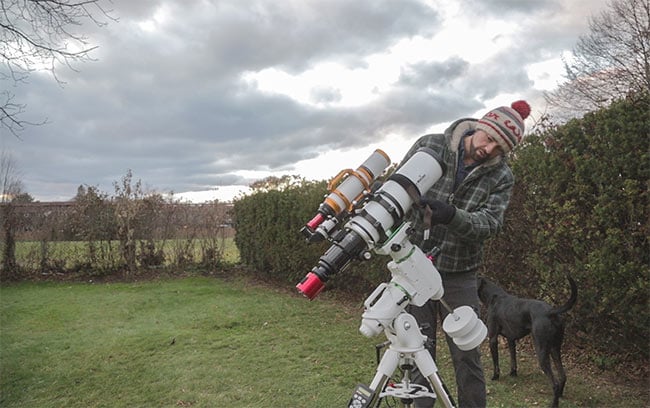
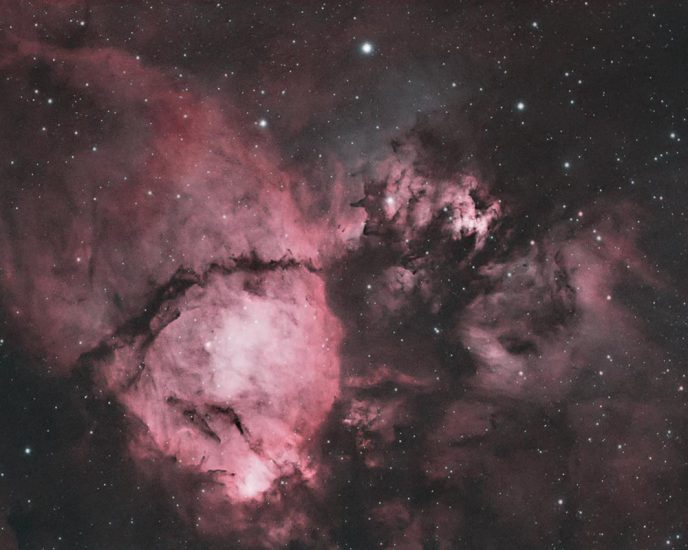
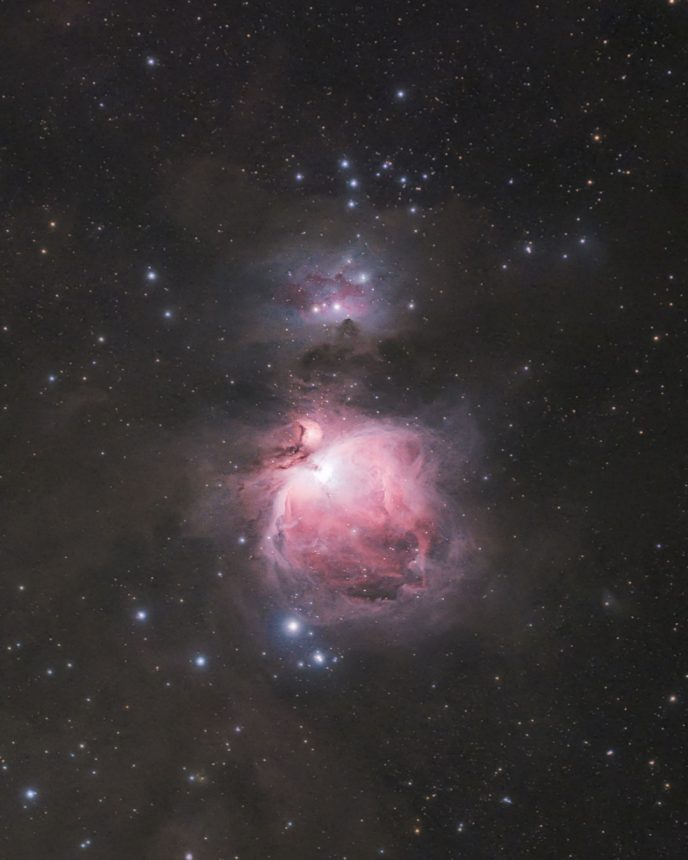
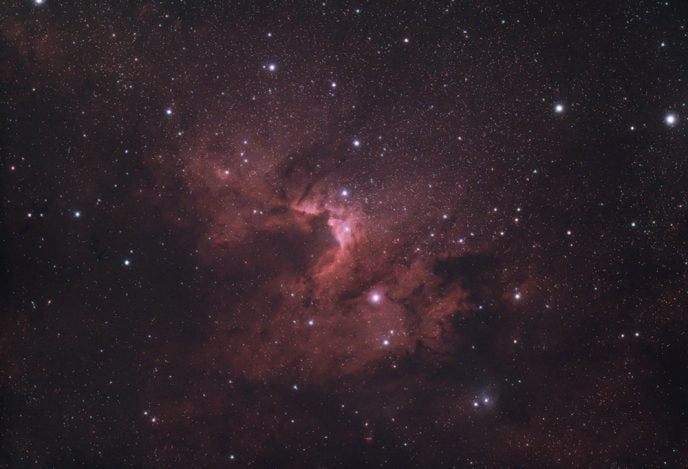
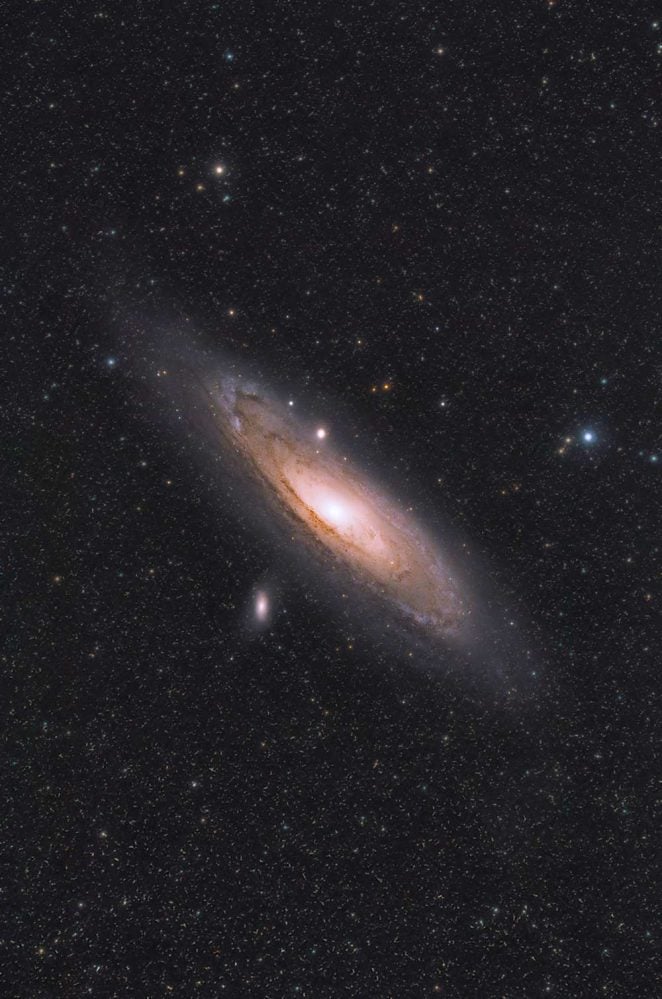




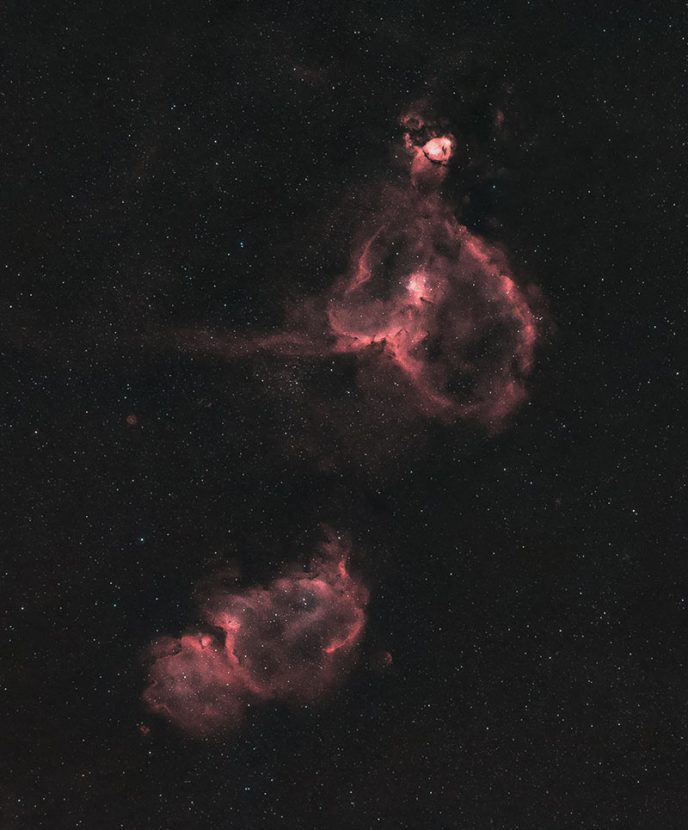
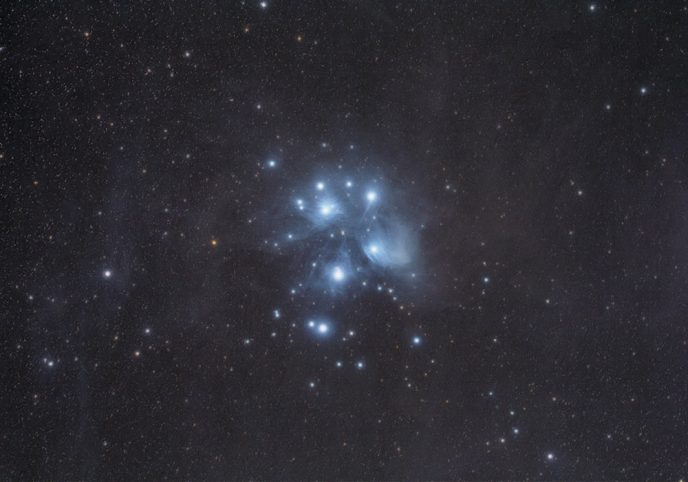
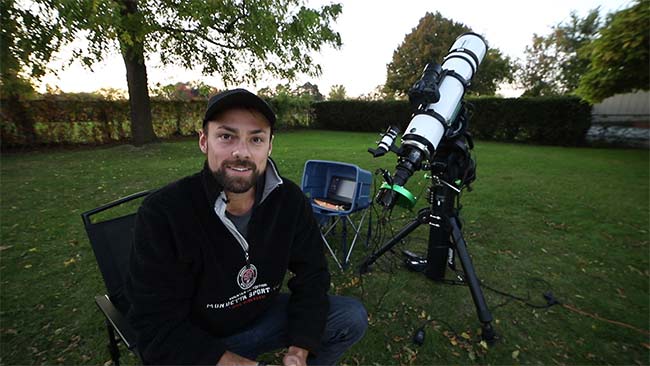


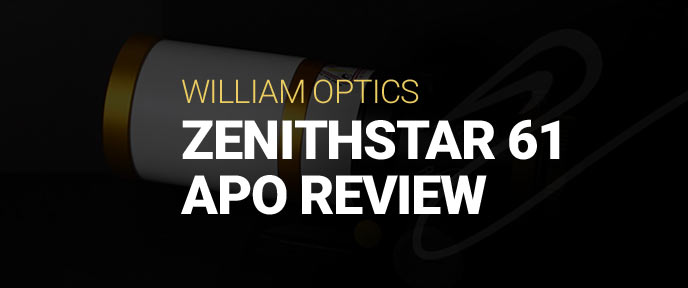


Excellent selection of images and thanks also for the information you provided – especially exposure times and equipment used. All the very best for 2020
Great Stuff! Thanks for sharing. I am learning a lot from watching you! I’m surprised that the Sky Watcher Star Adventurer is beating out the Sky Guider Pro or at least used in a lot of your images you have shared. I’m on the fence on both of these on which to get.
Great images and details. Interesting that the ES102 was not among the top 10.
As always Trevor it’s great to look over your images and see that although you get access to all these great cameras you still go back to the DSLR’s, the wife and kids could never understand my fascination for going without sleep and often freezing myself to the point I often made myself ill, but thanks to your videos and Chucky’s which they now watch with me they get it, keep going the kids are always looking for more now although they still love there beds to much to join me, have a great Christmas and new year when it comes from all in the Pearce household including Tiggi the collie.
Yours sincerely
Andy W Pearce.
Hi Trevor,
Thanks for all your great work. It is tremendously useful and enlightening.
Regarding the (very beautiful!) images above, I would have been curious to know if you had to significantly crop in post, i.e. are the final images a significant subset of the original frame.
If not, it almost removes the need for very long focal length from telescope such as the Edge series from Celestron.
I’ve purchased last summer the WIlliams ZenithStar 73 based on your recommendations!
If you had to recommend a second one, what would it be in terms of type (refractor or reflector) and which size/focal length?
Thanks a million!!
Marc
Very inspiring. It’s great to know that I don’t need to be an engineer to take beautiful photos. I agree with your comment that sometimes members on Cloudy Nights get caught up in the minutia. What shines is the art of the photo. I am currently working through your imaging processing primer, because capturing the images are half the battle.
Thanks for the inspiration!
Amazing images! You get soooo much out of your images with reasonable exposure times. Great work.
“While it was not selected, I feel that my first APOD will be using this system. ”
This hasn’t aged well…Congratulations Trevor on the APOD! 🙂